Piedra Parada Caldera
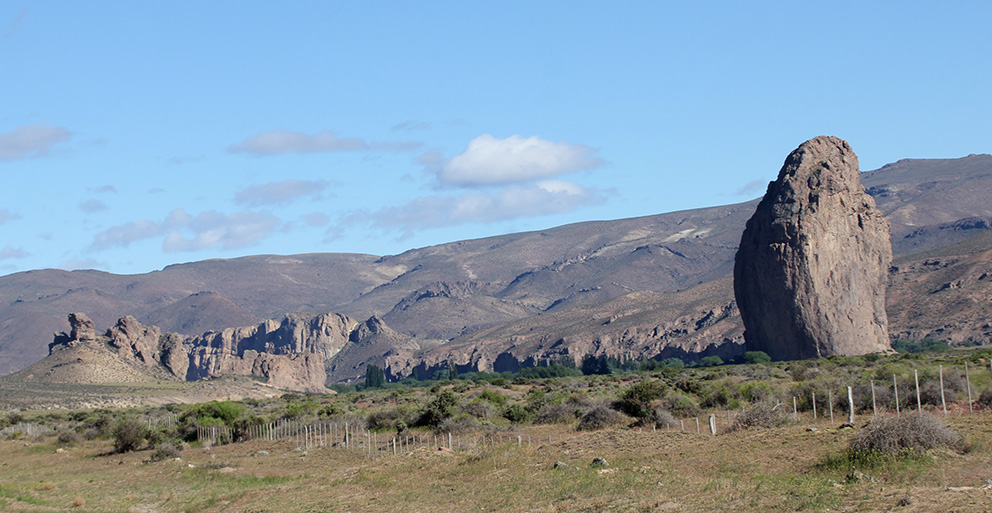
|
A small andesite body is fed by a dyke and forms a 10x5x5m blob into a soft tuff layer underneath a lahar. The andesite intrudes
the lahar which remained unconsolidated at that point.
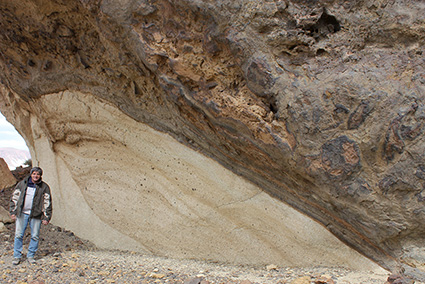
Figure 1a)Contact of the andesite blob with layered tuff at the base.
|
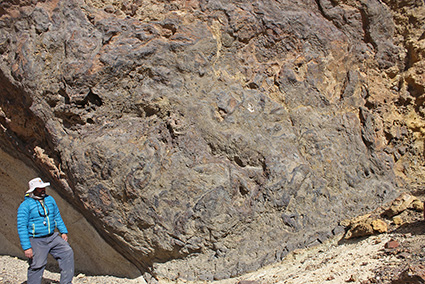
Figure 1b) Irregular contact of the andesite blob with the top lahar in orange colours.
|
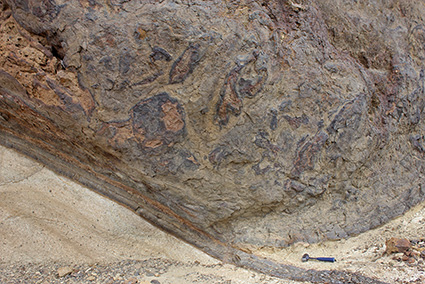
Figure 1c) The merging of a foliated andesite dyke with the curved, foliated margin of the andesite.
|

Figure 1d) The merging of a foliated andesite dyke with the curved, foliated margin of the andesite.
|

Figure 1e) Wispy andesite (unvesiculated) within vesiculated andesite.
|
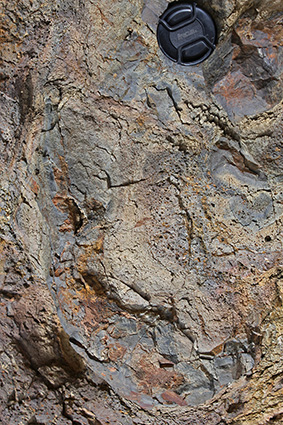
Figure 1f) Wispy andesite (unvesiculated) within vesiculated andesite.
|
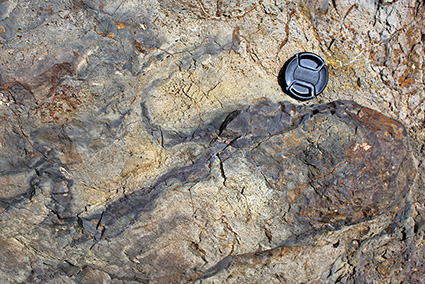
Figure 1g) Wispy andesite (unvesiculated) within vesiculated andesite.
|
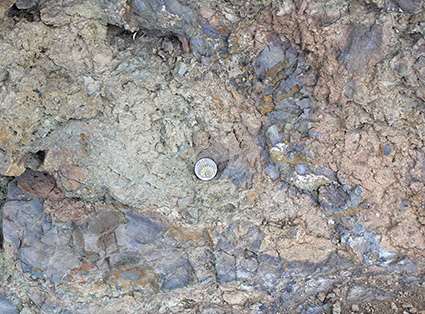
Figure 1h) Irregular intrusive andesite dyke into lahar, showing sediment was still soft.
|
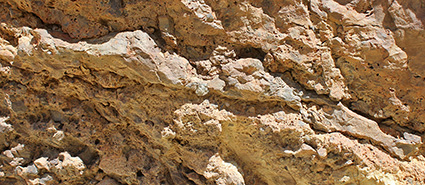
Figure 1i) Irregular intrusive andesite dyke into lahar, showing sediment was still soft.
|
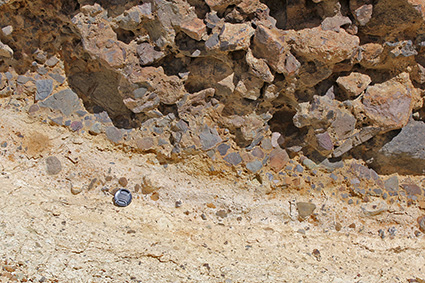
Figure 1j) Contact between lahar and underlying tuff.
|
Cryptodome
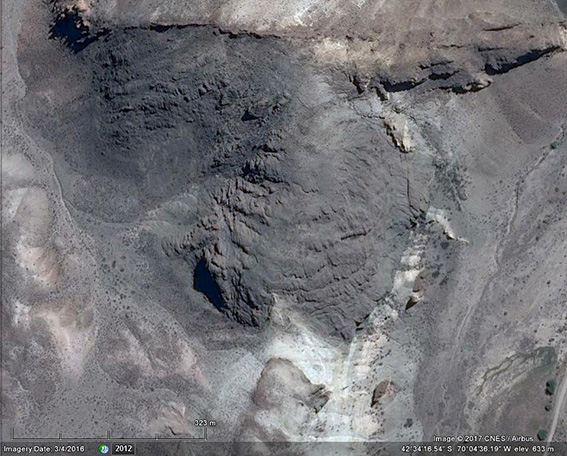
Google Earth image of cryptodome. Photos shown here are from the east side of the dome, looking west.
|

Figure 2a) Cryptodome.
|
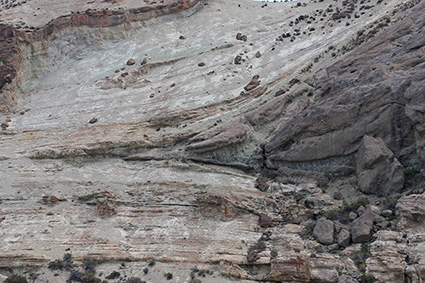
Figure 2b) South tip of the cryptodome.
|
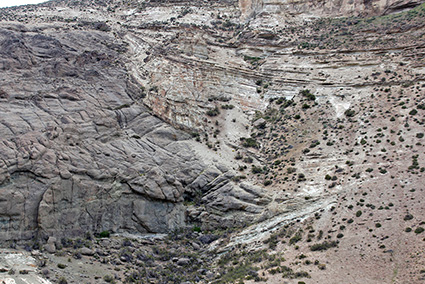
Figure 2c) North tip of the cryptodome.
|
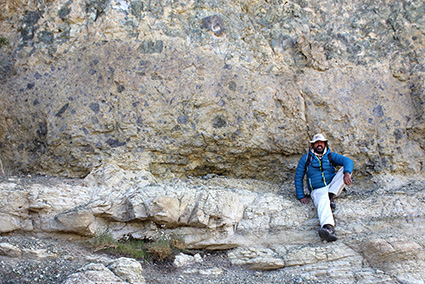
Figure 2d) Base of dome: hyaloclastite.
|
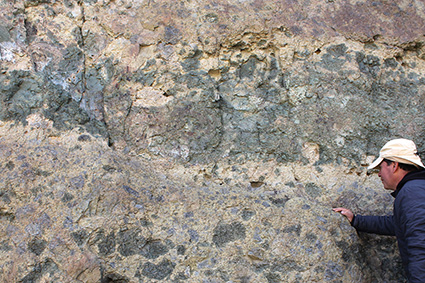
Figure 2f) Hyaloclastite intruded/interlayered by a sill of greenish cryptocrystalline rhyolite.
|
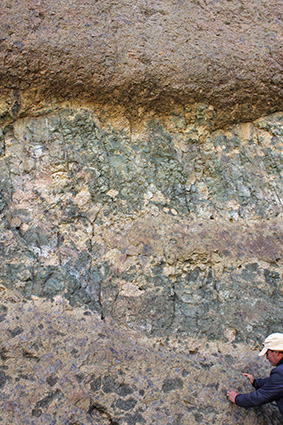
Figure 2g) Interlayered hyaloclastite and green sill.
|
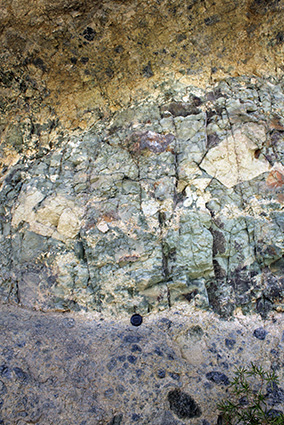
Figure 2h) Interlayered hyaloclastite and green sill. Notice angular blocks of both greenish rhyolite and cream-coloured ones.
|
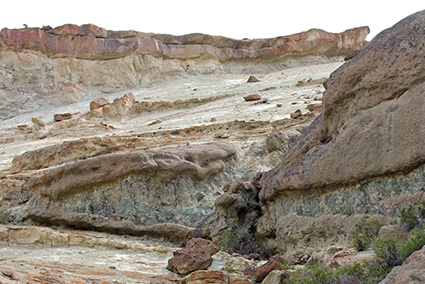
Figure 2i) Interlayered hyaloclastite and green rhyolites at the south tip of the dome.
|
Fiamme in Barda Colorada ignimbrite.
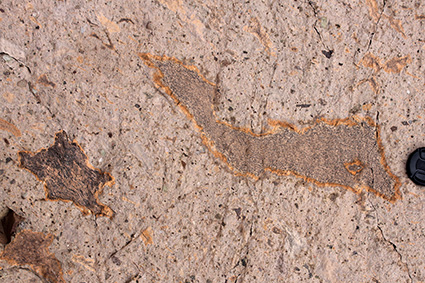
Figure 3a) Fluidal lapilli-shaped clasts. Note a 1cm rim of orange altered clast, with a narrow rim of zeolite. The matrix is not rheomorphic.
|
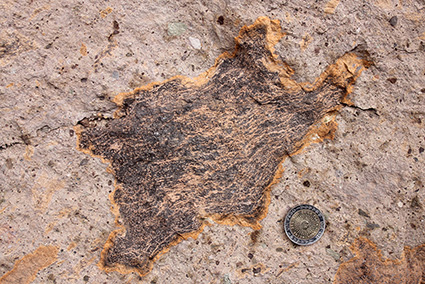
Figure 3b) Same but notice the internal texture of the clast, with dark elongated blebs in an orange matrix.
|
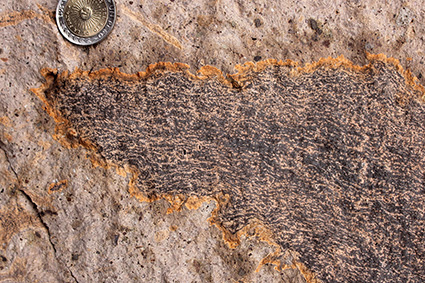
Figure 3c) Same but notice the internal texture of the clast, with dark elongated blebs in an orange matrix. Interpretation: the clasts froze
before
| 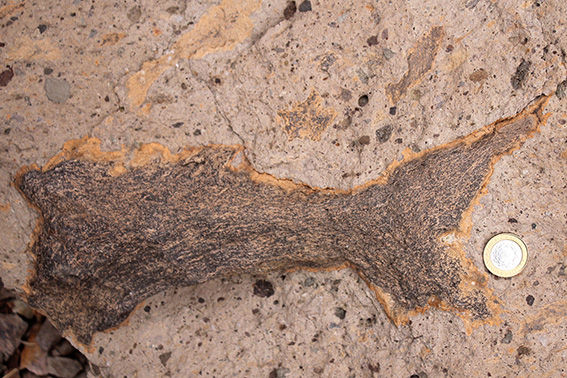
Figure 3d) Same.
|
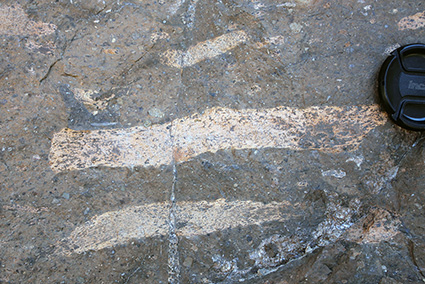
Figure 3e) In other blocks of ignimbrites, similar fiamme/clasts are angular.
|
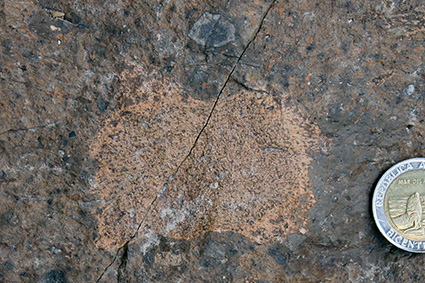
Figure 3f) Rectantular clast, but the edges are feathery and grade with the matrix of the ignimbrite.
|
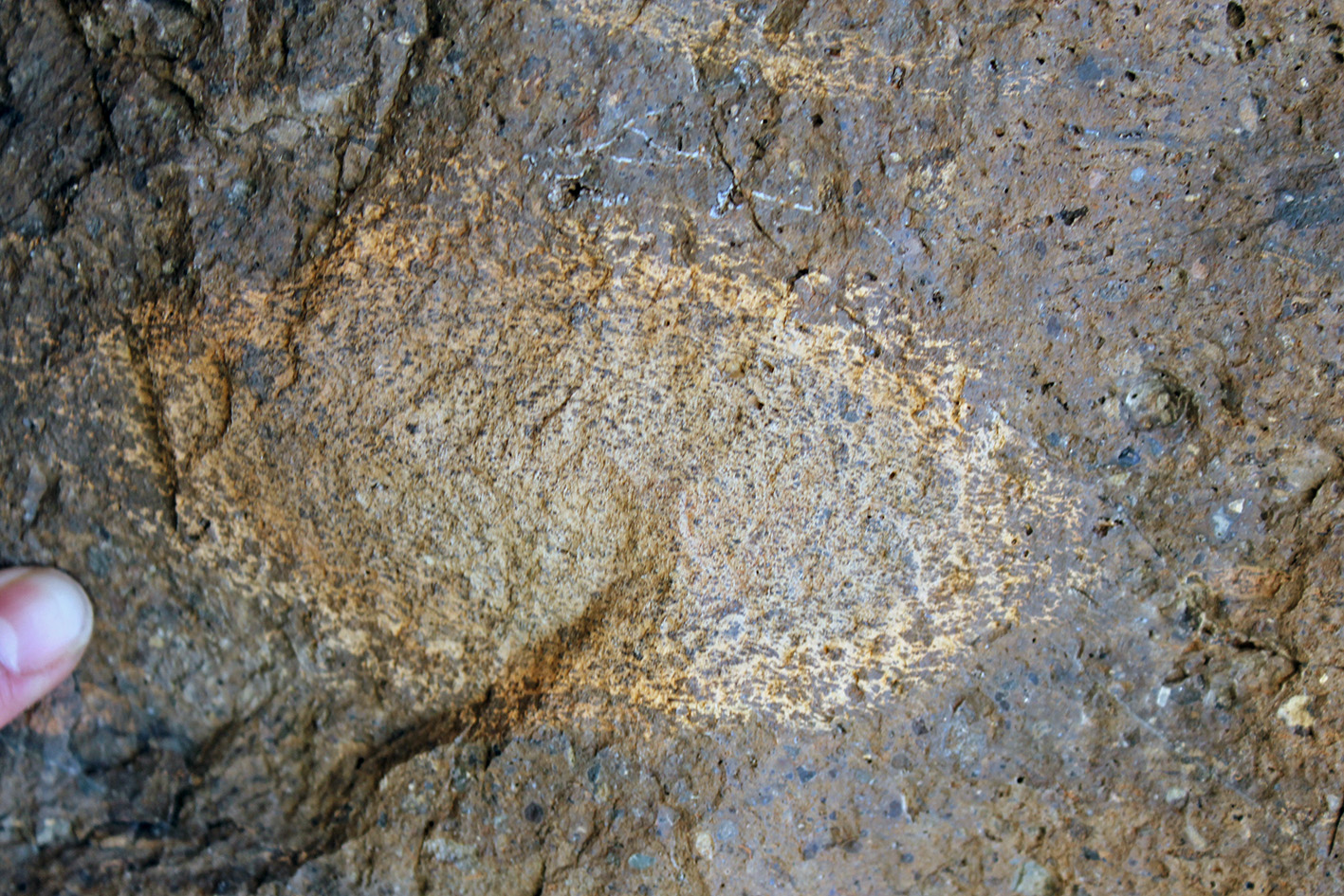
Figure 3g) Non-flattened clast centre but the margins are both flattened and feathery mixed with ignimbrite matrix.
|
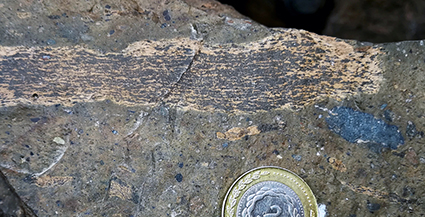
Figure 3h) Rectantular clast, with internal foliation defined by small stretched blobs of dark material in a light brown matrix.
|
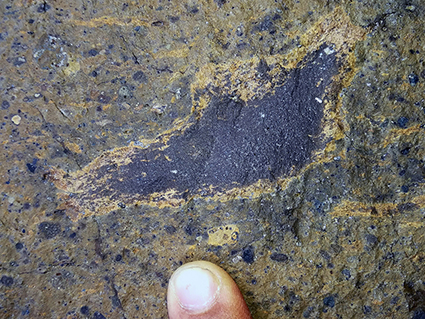
Figure 3i) Irregular fiamme? clast with a mafic core and light brown rim.
|
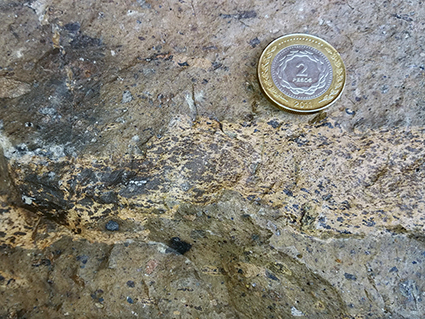
Figure 3j) Irregular fiamme? with internal foliation defined by small stretched blobs of dark material in a light brown matrix and feathery contacts.
|
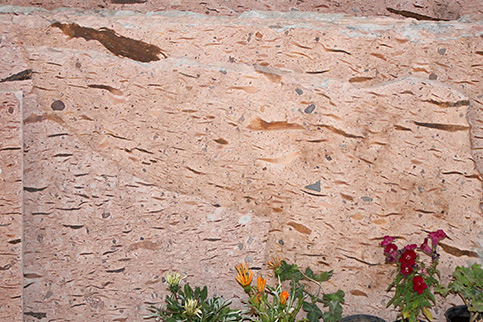
Figure 3k) Rheomorphic ignimbrite with delicate stretched, flattened fiamme.
|
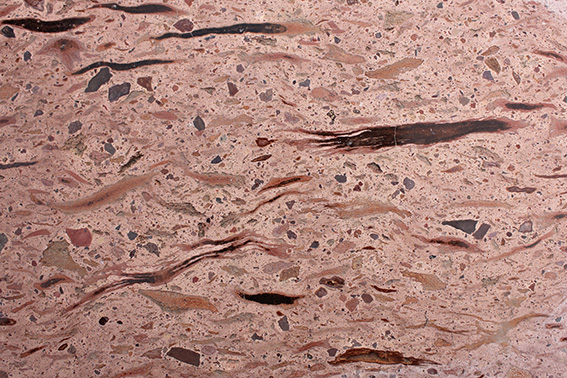
Figure 3l) Rheomorphic ignimbrite with delicate stretched, flattened fiamme.
|
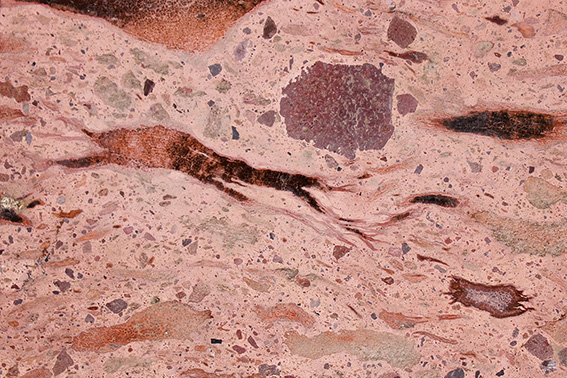
Figure 3m) Rheomorphic ignimbrite with delicate stretched, flattened fiamme.
|

Figure 3n) Rheomorphic ignimbrite with delicate stretched, flattened fiamme.
|
Photomicrographs of ignimbrite
Composite dyke
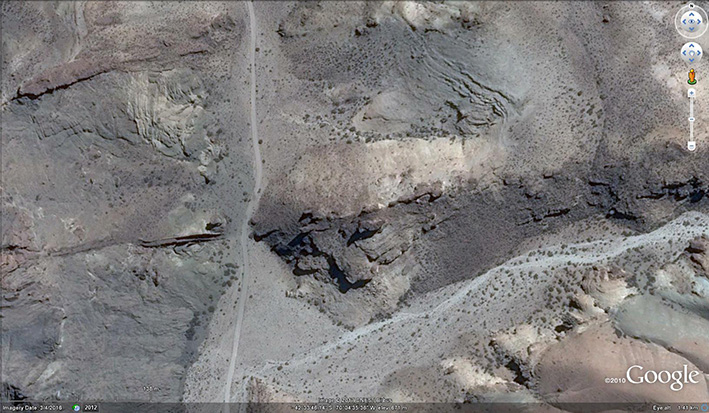
Figure 4a. Google Earth of a composite dyke with tall margins trending ~E-W.
Figure 4b. Same composite dyke with tall margins and low centre looking W. The margin is rhyolitic with quartz
phenocrysts, whereas the core is andesitic.
|
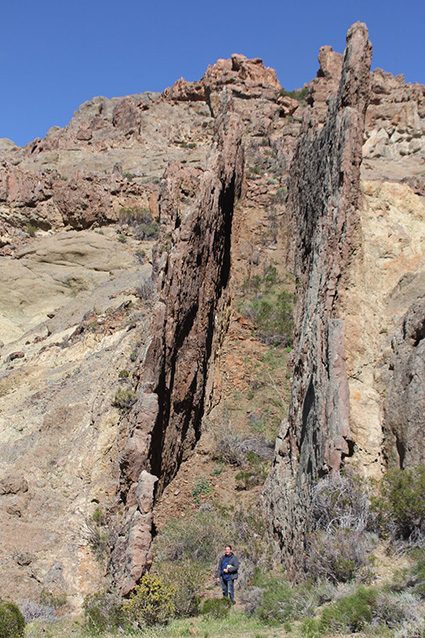
|
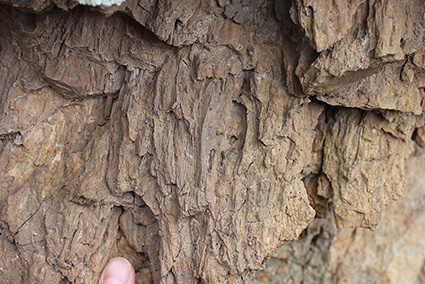
Figure 4c. Margins of the dyke are sheared tuff and has a strong down dip lineation, and the sheared tuff has S-C fabric
with a dyke-up shear sense in both margins, indicating
the drag force exerted by the magma in the dyke.
|











